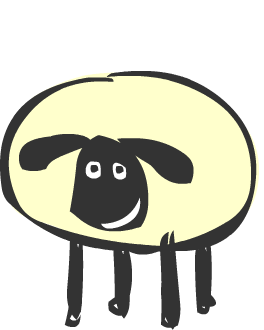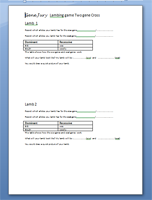Single gene cross
Duration of activity: 25 minutes Suitable for: Pupils S4 or younger.
Powerpoint explanation for pupils |
Game cards
Size cards
|
Game sheet |
This is a game we run in our GM workshops, it suitable for pupils S4 or younger, but it is relevant to many aspects of genetics. There is a two gene cross available which is suitable for older pupils.
Preparation
Print out game cards - use different coloured paper for the size cards and the coat cards. Each pupil will get one set of cards and each set should have one wee card and one big card. If you have time, label each set with a different number, so that they don't all get mixed up, creating havoc with the ratios!
Print out game sheets one for each pair of pupils.
Method
The pupils will work in pairs, but each pupil needs full set of genes.
Each pupil gets: a set of two size cards (one represents the big allele and one the wee allele). They place the cards face down on the table.
Each pupil is a sheep parent. Explain that thay have two sets of chromosomes and therefore two versions of each gene: they got one version/set from their mum and one from their dad.
The pupils are now going to make lambs together. Ask them to make a gamete by randomly selecting just one size gene card. Explain that a gamete is an egg or sperm cell and that those types of cell only have one set of genes.
Get them to combine their gamete with the person sitting next to them, to make a lamb which has two sets of genes.
They can turn over their cards to see what genes their lamb is carrying. They can record these (genotype) on their sheet.
Using the table of dominance (BIG is dominant, and this is stated on their game sheets) they can work out what their lambs are going to look like (phenotype) and draw a picture.
Get them to reclaim their orginal genes, then repeat the process to make another lamb.
It is useful to collect the frequency of occurence of each of the two possible lamb phenotypes: how many BIG lambs and how many wee ones.
Get the students to predict which will be the most/least common phenotype and let them explain why they predict that.
You should end up with a ratio roughly 3:1


